This article contains the best CPU Cooler Picks. We created these lists after years of testing and will continue enriching the corresponding lists and graphs with coolers.
| Update Date | Changes |
| 12 September 2025 | Major update |
| 18 September 2023 | Initial article |
I will include affiliate links for the products we recommend. You don’t pay more using these affiliate links, but you help us keep this site alive and kicking! We also have a Patreon page if you want to support us.
Test Methodology
We first install the cooler into a hemi-anechoic chamber, and with the help of a highly sophisticated sound analyzer, we take all necessary noise measurements required for the testing. Afterward, we install the system inside a giant climate chamber, where the ambient temperature remains steady at 25 degrees Celsius; this way, We don’t have to take the delta difference into account since we can evaluate all coolers under the same ambient temperature.
- Manufacturer: Giant Force
- Model Number: GTH-800-20-CP-AR
- Temp Range: -20℃ ~ +100℃
- Humidity Range: 20% ~ 98% RH
- Temp/humidity Constancy: ±0.2℃; ±2.5%RH
- Temp/humidity Uniformity at center: ±0.5℃; ±4%RH
- Indication Resolution:
- Internal Dimensions (WHD): 100 x 100 x 80 cm
- External Dimensions (WHD): 145 x 190 x 135 cm
- Net Weight (approx): 450 kgs
- Heat-up Time (No load, no linear): (from 20°C to +100°C) 30min
- Pull-down Time (No load, no linear): (from 20°C to -20°C) 50min
- Cooling System: Airtight compressor + evaporator fins + air-cooling condenser
- Power Source: 3Φ AC 380V ±5%, 50Hz±1% 10KW
- Based on Standards: ISO 5801-2007, AMCA 210-0, ASHRAE 51-2007, IEC 61591-2005, GB/T 1236-200
In addition to the Giant Force climate chamber, I also utilize the following equipment.
- Noise Test Environment: Hemi-Anechoic Chamber with 6 dB(A) noise floor
- Conditions: 25 (+-2) degrees Celsius, 40-50% humidity
- Sound Analyzer: Bruel & Kjaer 2270-S G4
- Microphone: Bruel & Kjaer Type 4955-A
- Mic Calibrator: Bruel & Kjaer Type 4231
- Data Logger: Picoscope TC-08
To evaluate the coolers, I use an Intel Core Ultra 9 285K. This beast can exceed 300W of sustained load, which I measure accurately using a Powenetics v2 system. Below are all the parts of the CPU cooling station test system. The thermal paste I use is Arctic Cooling MX-4. I run at least two test sessions and take the average results. In all tests, the applied conditions are the following:
- Ambient Temperature: 25°C ±0.5°C
- Humidity: 30% ±4%RH
Intel LGA 1851 Test System Specs |
||||
| Mainboard | ASRock Z890 Taichi [BIOS: 2.09.AS01 – Nov 4, 2024] |
|||
| CPU | Intel Core Ultra 9 285K | |||
| GPU | Embedded | |||
| NVMe | XPG GAMMIX S50 Lite 1TB | |||
| RAM | Gskill Ripjaws S5 DDR5 ( 2 x 16GB) 6000MHz | |||
| Power Supply | Seasonic Vertex 1200W (Cybenetics Platinum) |
|||
| CPU Cooler | What is under test! | |||
| Case | DimasTech Bench | |||
I also use an AMD system to evaluate the cooler’s performance. This processor’s maximum actual TDP is 195- 200W.
AMD Test System Specs |
||||
| Mainboard | Asus TUF GAMING X670E-PLUS | |||
| CPU | AMD Ryzen 9 7900x | |||
| GPU | Embedded | |||
| NVMe | XPG GAMMIX S50 Lite 1TB | |||
| RAM | XPG Lancer DDR5 (2 x 16GB) 6000MHz | |||
| Power Supply | Seasonic Vertex 1200W (Cybenetics Platinum) |
|||
| CPU Cooler | What is under test! | |||
| Case | Cooler Master Test Bench | |||
The load application is none other than the notorious Prime95 (small FFTs), which applies a tremendous load to the processor. I run each test for 20 minutes, allowing for a 10-minute cool period between each test. The entire procedure is fully automated thanks to a specific application that I developed for this purpose. In AIOs, the pump runs at full speed during the whole testing duration.
The critical point in our methodology is that we consider the CPU’s average frequency during testing because it doesn’t remain steady throughout the tests. It constantly changes according to the load and operating temperatures. Moreover, we have the Powenetics system to continually measure the CPU’s power consumption, which is way more accurate and faster than a software solution like HWinfo (don’t get us wrong—HWinfo is still a great tool).
Overall Performance Calculation
To calculate each cooler’s overall performance, we take into account three factors: the CPU’s temperature, wattage, and frequency, by using the following equation:
(Wattage / Temperature) x Frequency


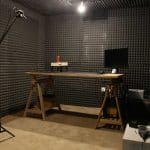
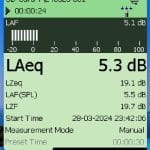
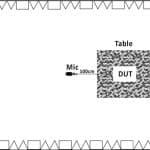
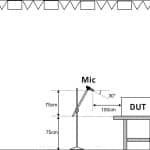
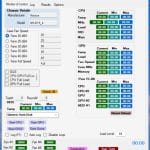
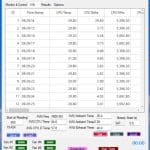
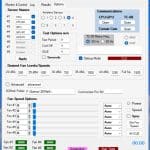


Curious how much more wattage increase, temp decrease the top dogs of air coolers could achieve with more performant fans no noise consideration. I use Arctic MX-4 paste as well, have yet to ever see it degrade over time. AMD & Intel’s upcoming platforms I imagine allowed package power will be higher we’ll see what cooling companies come up with for air
Heya, how is the CoolerMaster Atomos 360 trading punches with the Arctic Freezer III Pro 420 in overall performance and most metrics when there’s a gap between the two in CPU wattage at set noise levels?
Also, got any idea how the Atomos II or Atomos Stealth measure up to these?
Hi! The Atmos 360 has top performance, as I remember. I don’t understand what you mean by the gap between the two in CPU Wattage at set noise levels. I use an algorithm that includes Wattage, frequency, and temperature.
I haven’t checked the ones you mention, sorry.
Could you do a comparative of air vs liquid cooled table/chart / price. curious to see how they perform against each other as products have improved over the years.
We will soon update this article.
It’s a shame that there is no comparison table on which is better, the ‘Cooler Master MasterLiquid 360 Atmos’ or the ‘Arctic Liquid Freezer III 420’ on AMD CPUs.
Did you test the Fuma 3 yet? I see the link but wasn’t sure compared to the Mugen 6. The Thermalright Peerless Assassin 140 seems to MIA everywhere so not sure what is going on there, but maybe it hasn’t started arriving at retailers yet.
Nope, I haven’t tested it yet.
I see the Thermalright phantom spirit 120 evo is on the recommended purchase links. I was wondering how does it perform in relation to the models that were tested?
I haven’t tested it yet.
I think you should add Asus Rog and Lian Li (Performance variations) products to this list because their AIO coolers have real good tech specs.
Once they send me products and I test them, I will do 🙂